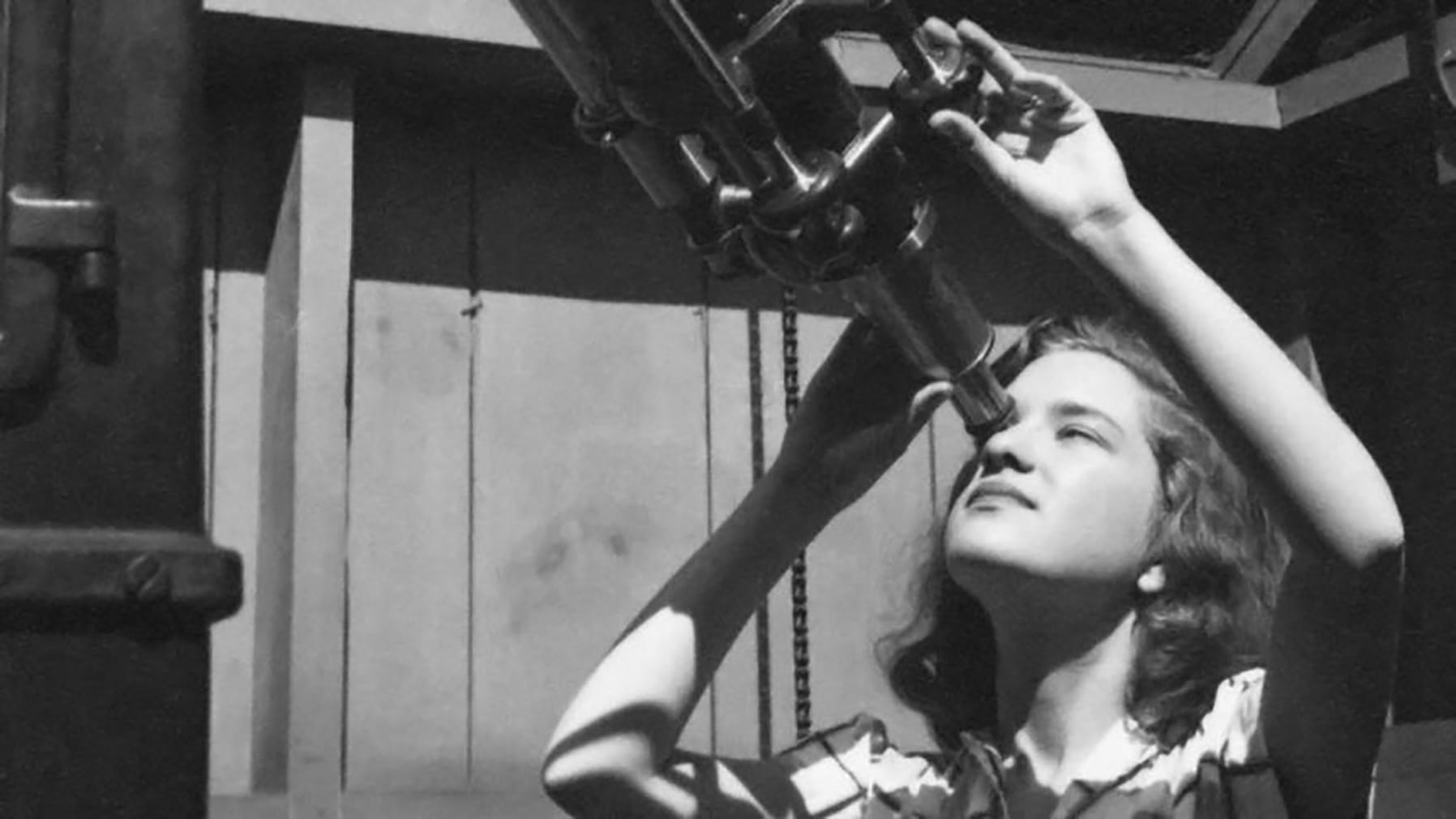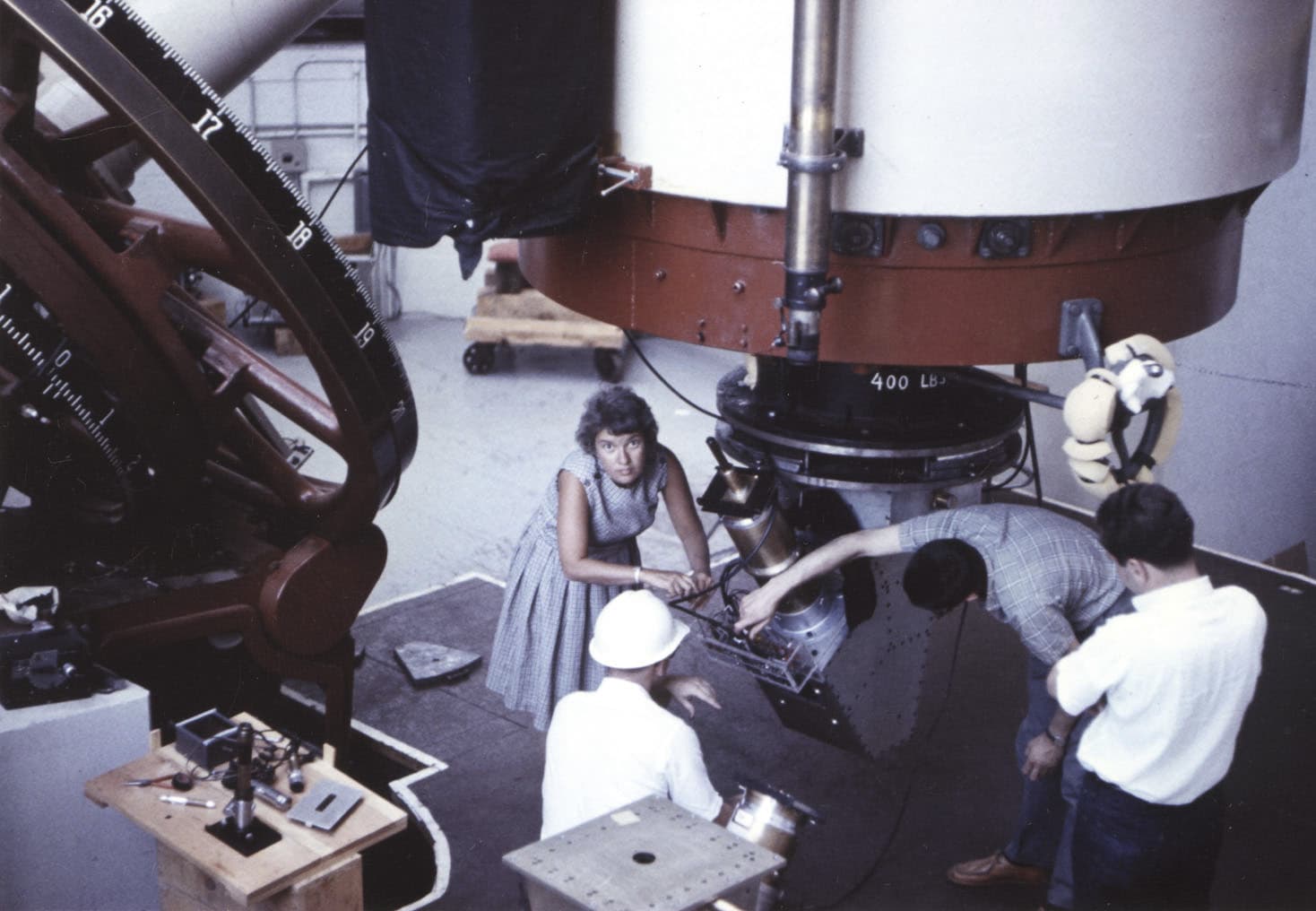American astronomer Vera Rubin and her love for astronomy
Vera Rubin made a fundamental contribution to modern astrophysics by revealing that galaxies are flooded with matter invisible to our eyes. In 1965, Rubin became the first woman in history to be allowed to use the telescopes at the Mount Palomar Observatory.

Vera Cooper Rubin was born in 1928 in Philadelphia. Her love of astronomy arose while looking out the window at the movement of the stars in the night sky when she was about 10 years old. She recalls that "at that time I would rather look at the stars than sleep, it was my favorite thing to do". When she looked at them she perceived how the Earth moved and how time passed, she felt a unique emotion. At the age of 14, with the help of his father, she built a telescope with a cardboard tube and some glasses that she bought in the center of the city.
As a teenager Vera Rubin decided to study astronomy at Vassar University, she chose that institution because she was granted a scholarship and it was one of the few places where women could study a career. During her university years, she recalls that "there were few options to be an astronomer, I was not discouraged, but I was not very encouraged to be one either". It is worth noting that she was the second woman astronomer elected to the National Academy of Sciences of the United States of America.
The discoveries of Vera Rubin
Upon completion of her studies, Vera married Robert J. Rubin and they went to Cornell, where Vera studied for her master's degree and sought to enroll as a graduate student at Princeton, but women were not allowed to enter the university, a policy that was abolished until 1975.
At Cornell University she focused on the large-scale motions of galaxies. Vera Rubin suggested that the largest galaxies did not rotate in an escape motion, as the Big Bang theory suggested, but around other unknown structures. The scientist later admitted that her results were questionable. Years later, these ideas were crucial to Gerard de Vaucouleur's discovery of the Local Supercluster.

When Vera's husband finished his Ph.D., they moved to Washington. There, she met George Gamow (who predicted that the Cosmic Microwave Background was a consequence of the Big Bang) when he gave a talk at the university, which Vera did not attend because wives could not participate in such events. However, he called her to talk about his results and during discussions with the astronomer, she decided to study for her Ph.D. under his advisement, in which she developed a method to describe statistically the spatial distribution of galaxies in the universe. She found that many were clustered together and predicted that there should be empty spaces between them. Her results did not generate much interest at the time, but years later they were confirmed and are still in use today.
Fame is fleeting. My numbers mean more to me than my name. If astronomers continue to use my data in the future, that is my greatest compliment. - Vera Rubin (Discover, 1990)
In 1964 Vera Rubin became the first woman to work as a researcher at the Monte Palomar Observatory, and when she discovered that there was no women's restroom, she cut out a piece of paper in the shape of a woman and stuck it on the door while telling her colleagues "look, now you have a women's restroom".
In the 1970s she began working with Kent Ford on a high-quality spectrograph with which she investigated the rotation of galaxies, including M31. Vera Rubin was interested in the peripheral zones, much less studied than the central regions of galaxies. Rubin and Ford found that the stars in those regions were moving faster than expected. Until that time it was assumed that galaxies moved like the solar system, i.e., that the planets closer to the Sun move faster than the outermost ones.

In a paper published in 1978 in The Astrophysical Journal, astronomers presented the rotation curves of seven galaxies. The rotation curve of a galaxy is the representation of the rates at which stars rotate as a function of their distance from the center of the galaxy. Instead of the curves falling in the outermost regions, they were quite flat. These results challenged the astronomical knowledge of the time.
To explain them, Vera Rubin proposed that the outer regions of the galaxies contained large amounts of a very dense, invisible matter that had a large gravitational effect on the motion of the stars. Decades before this finding, Franz Zwicky's results on the Coma cluster of galaxies already pointed to the existence of dark matter, but Rubin and Ford's rotation curves marked a turning point.
No direct evidence of dark matter has yet been found. The most popular idea among scientists is that it consists of some kind of particle that we do not know about and that does not interact with anything, they are called weakly interacting massive particles (WIMPs). Thanks to Vera Rubin we are more aware of how much we still don't know.
In an interview Vera Rubin was asked which galaxy she would like to go to if she could, "I would like to go to Andromeda to look from there into our galaxy and see what it is like. I would like to get close to the nucleus of the galaxy to see the details, but not too close, so as not to be swallowed up by the black hole".
Sources: UASLP, by Gloria Delgado Inglada, Institute Of Astronomy, UNAM




